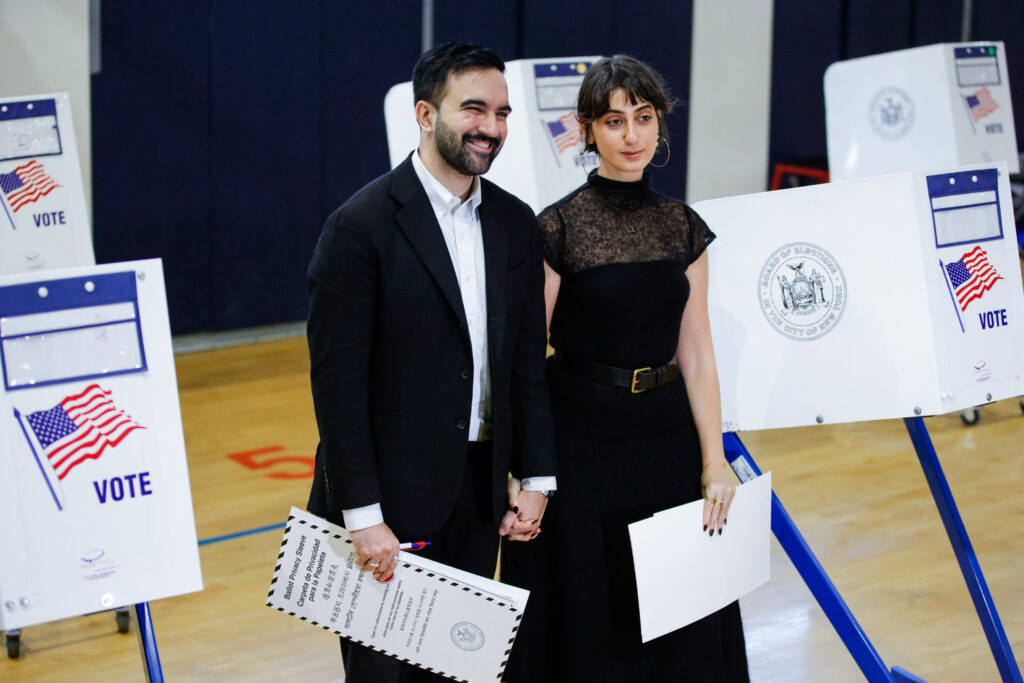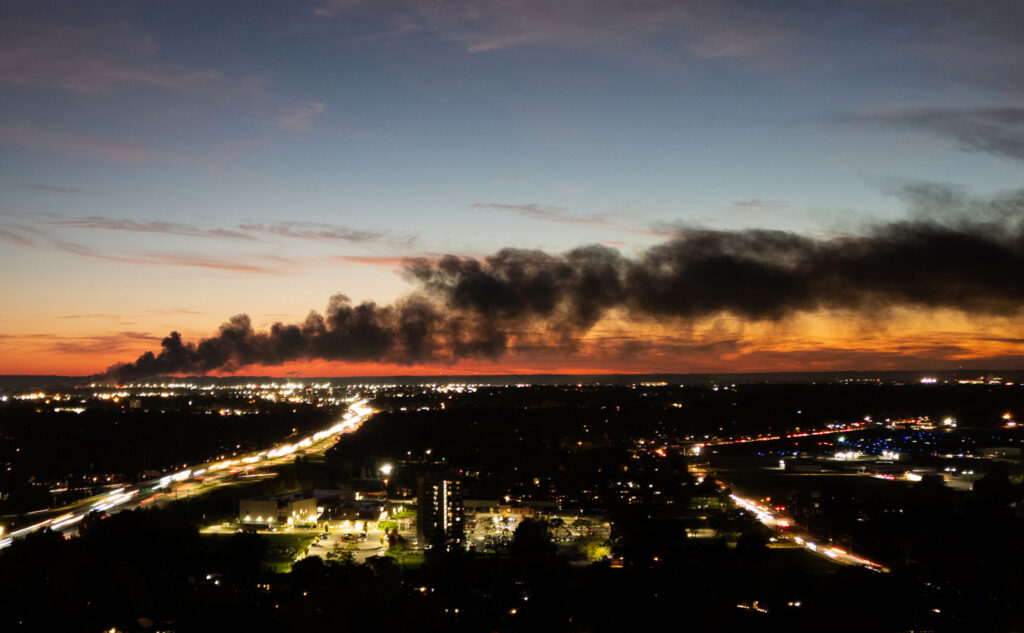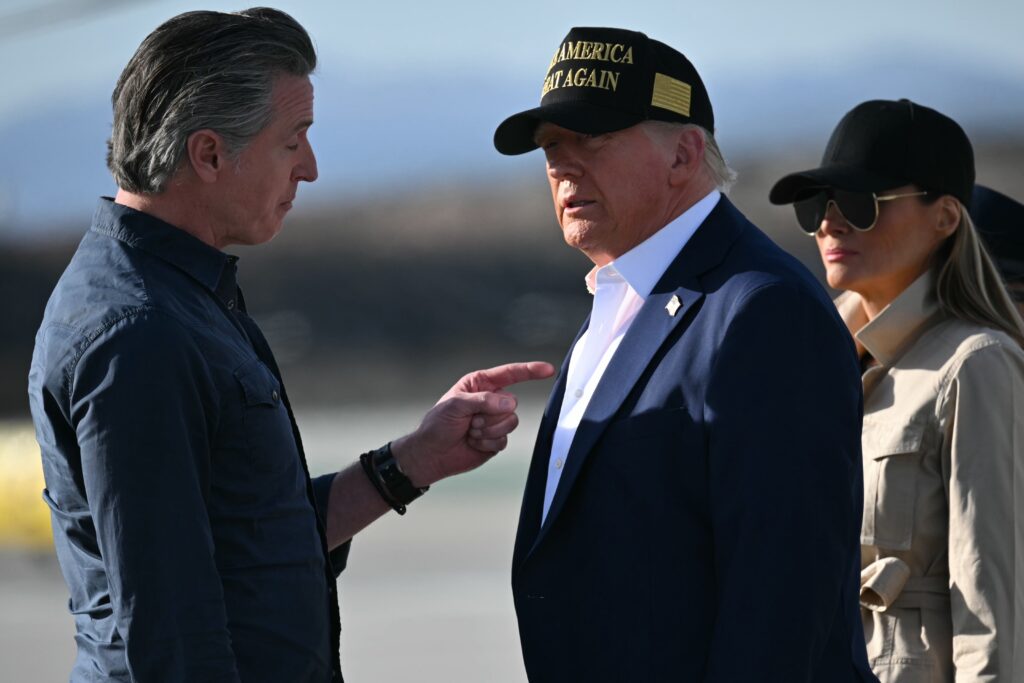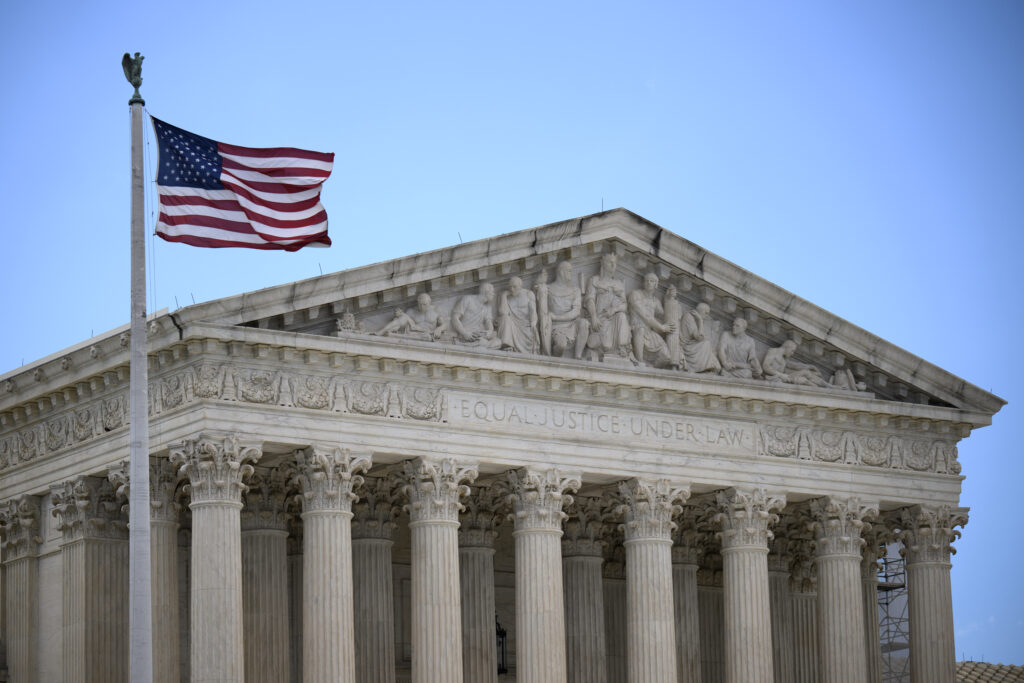Mamdani, opposant résolu de Trump, aux portes de la mairie de New York
Un socialiste de 34 ans, Zohran Mamdani, est en position favorable pour remporter la mairie de New York, dans le plus suivi des scrutins locaux qui se tiennent mardi aux Etats-Unis et constituent un premier test électoral pour Donald Trump.La soirée a mal commencé pour le président républicain, dont le camp vient de perdre le …
Mamdani, opposant résolu de Trump, aux portes de la mairie de New York Read More »
At least 7 dead after UPS cargo plane crashes near Louisville airport
At least seven people died and several more were injured after a UPS cargo plane crashed shortly after takeoff on Tuesday from Louisville International Airport in Kentucky, exploding into flames as it crashed into businesses adjacent to the airport.The US Federal Aviation Administration (FAA) said the McDonnell Douglas MD-11 departing for Hawaii crashed at around 5:15 p.m. local time (2215 GMT). Kentucky Governor Andy Beshear told a press briefing that he expected the number of dead and injured was going to rise.”First responders are onsite and working hard to extinguish the fire and continue the investigation,” he posted in a Tuesday night update on X.UPS said in a statement that three crew members were on board the aircraft, adding that “we have not confirmed any injuries/casualties.”Beshear said the status of the three crew members was unknown and said that he was “very concerned” for them.The cause of the crash was under investigation by the FAA and the US National Transportation Safety Board (NTSB). Video shared by local broadcaster WLKY appears to show the aircraft’s left engine on fire as it tried to lift off.Officials at the Louisville Muhammad Ali International Airport announced that all flights scheduled for departure on Tuesday evening had been cancelled, and UPS said it had halted package sorting operations at their facility. The flight “went down three miles south of the airfield” after taking off from runway 17R, said Jonathan Bevin, an airport police spokesman. Louisville serves as the main US air hub for UPS, according to a company fact sheet. The package delivery giant travels to more than 200 countries via nearly 2,000 flights per day, with a fleet of 516 aircraft. UPS owns 294 of those planes and hires the rest through short-term leases or charters. Aerial footage of the crash site showed a long trail of debris as firefighters blasted water on the flames, with smoke billowing from the disaster area.Governor Beshear said the aircraft hit a petroleum recycling facility “pretty directly.”- Government shutdown -The crash comes amid one of the longest government shutdowns in US history, with Transportation Secretary Sean Duffy warning of “mass chaos” earlier Tuesday due to a lack of air traffic control staff. “You’ll see mass cancellations, and you may see us close certain parts of the airspace, because we just cannot manage it because we don’t have the air traffic controllers,” Duffy told reporters.In a statement on X, Duffy called footage of the crash “heartbreaking,” adding: “Please join me in prayer for the Louisville community and flight crew impacted by this horrific crash.”In January, an American Eagle airliner hit a military Black Hawk outside Washington’s Ronald Reagan National airport, killing 67 people.That crash, which ended the United States’ 16-year streak of no fatal commercial air crashes, has added to concerns about the US air traffic control system, which some regard as an understaffed operation beset by problems with old equipment.
California votes to redraw election boundaries to counter Trump
California voted overwhelmingly to redraw its electoral districts Tuesday, in a poll Democrats called to counter efforts by US President Donald Trump to gerrymander in Republican states.Early results showed a large majority in the traditionally liberal state voted in favor of a motion that was widely promoted as an opportunity to “stick it to Trump.”Voters approved of Proposition 50 by a margin of two-to-one, early official results showed, with major media outlets projecting it would retain a significant majority when the final tally is counted.The result is a big win for Governor Gavin Newsom, who is increasingly staking his claim to leadership of the Democratic Party on his willingness to stand up to Trump.”We’re proud of the work that the people of the state of California did tonight to send a powerful message to… the most historically unpopular president in modern history,” Newsom said as the results came in.Newsom and his allies asked voters to approve a temporary re-drawing of electoral districts that could give the Democratic Party five more seats in the scramble for control of the US Congress in next year’s midterm elections.Republicans complained it was a power grab that would disenfranchise the party’s voters in California.Democrats said they were simply trying to level the playing field after Texas Republicans pushed through their own redistricting — under White House pressure — to help maintain a narrow Congressional majority that has so far given Trump carte blanche.”Donald Trump is under water. He promised to make us healthier. He promised to make us wealthier. We’re sicker and poorer, and he understands that,” Newsom said.”Why else is he trying to rig the midterm elections before one single vote is even cast?”- ‘RIGGED’ -TV commercials for the “Yes” campaign gleefully imagined an irate Trump watching the results on television as he rambled incoherently and threw French fries at the screen.The president — whose enmity towards California has been a recurring theme in his decade in national politics — was clearly annoyed by the ballot initiative.”The Unconstitutional Redistricting Vote in California is a GIANT SCAM in that the entire process, in particular the Voting itself, is RIGGED,” Trump wrote on social media Tuesday, without offering any evidence.US electoral districts are traditionally drawn following the national census taken every 10 years, theoretically so the electoral map reflects the people who live there.In reality, most boundaries are party political decisions, so whichever grouping is in power at the time gets to set the rules for the next decade’s contests.California did away with such partisan gerrymandering under former governor Arnold Schwarzenegger, giving the power instead to an independent panel — one of a small number of states to do so.If Tuesday’s results are confirmed, politically drawn boundaries will take effect for all elections until the next census, when the panel will once again determine the maps.The vote is “a political ink-blot test,” Los Angeles Times columnist Mark Barbarak wrote Monday.”A reasoned attempt to even things out in response to Texas’ attempt to nab five more congressional seats. Or a ruthless gambit to drive the California GOP to near-extinction.”What many California voters see depends on, politically, where they stand.”People at the polls in Los Angeles on Tuesday said the vote was about fighting back against Republican shenanigans elsewhere in the country.”I’ll take anything we can get, anything we can get. We got to sometimes use the methods they’re using, whatever will get us moving forward,” Casey Mason told AFP.Makela Yepez said he was not particularly pleased that the state’s independent boundary commission was taking a temporary back seat, but felt the ends justified the means.”I think we’re using the tools that are at our disposal, and I think we have to have faith that it’s going to work,” he said.
US Supreme Court hears challenge to Trump tariff powers
The US Supreme Court will hear arguments Wednesday on whether a wide swath of Donald Trump’s tariffs are lawful, in a landmark case that could uphold — or upend — the president’s economic agenda.Billions of dollars in customs revenue and a key lever in Trump’s trade wars are at stake, while the conservative-dominated court once again grapples with novel tests of presidential authority.Trump has hyped the case as “one of the most important” in US history and warned of calamity if his tariffs are overturned.This “case is, literally, LIFE OR DEATH for our Country,” he posted Tuesday on his Truth Social platform.The high court’s nine justices will consider Trump’s use of emergency powers to impose so-called “reciprocal” tariffs on nearly every US trade partner, as well as levies targeting Mexico, Canada and China over their alleged roles in illicit drug flows.Opponents argue that such broad tariffs are not permitted by the International Emergency Economic Powers Act (IEEPA), the law cited by Trump in issuing the levies.The court’s decision, which could take months to arrive, does not concern sector-specific tariffs Trump imposed, including on steel, aluminum and automobiles.Since returning to the White House, Trump has brought the overall average effective tariff rate to its highest since the 1930s.A lower court ruled in May that Trump exceeded his authority in imposing his global duties, a decision affirmed on appeal, prompting Trump to take the fight to the Supreme Court.”If a President was not able to quickly and nimbly use the power of Tariffs, we would be defenseless, leading perhaps even to the ruination of our Nation,” Trump argued Sunday on Truth Social.- ‘Ringside seat’ -The president floated the provocative idea of attending Wednesday’s hearing himself but ultimately decided against it, saying he did “not want to distract” from the decision’s importance.Treasury Secretary Scott Bessent however told Fox News he plans to “have a ringside seat.”Asked if his presence could be seen as an intimidation attempt, Bessent said: “They can say what they want. I am there to emphasize that this is an economic emergency.”White House Press Secretary Karoline Leavitt told reporters Tuesday that the administration was fully confident in its legal arguments, but was nonetheless “always preparing for Plan B.”Trump’s administration argues that under the IEEPA, the president can “regulate” trade by unilaterally setting import tax rates at any level.But challengers note the words “tariff” or “tax” do not appear in the statute, and that the US Constitution explicitly grants Congress the power to establish levies.Businesses, lawmakers and former US officials have filed around 40 legal briefs against the president’s global tariffs, while only a few briefs supported his actions.- The arguments -Although Trump’s tariffs have not sparked widespread inflation, companies and particularly small firms say they bear the brunt of higher import costs.The group of small businesses and states challenging Trump’s tariffs argue that even as the IEEPA allows the president to “regulate” imports in an emergency, it does not confer him power “to tax every corner of the economy that is subject to regulation.”Persistent US trade deficits, which Trump cited to launch his “reciprocal” tariffs, also do not meet the IEEPA’s requirement of an “unusual and extraordinary threat,” the opponents argued.Trump’s lawyers have countered that even longstanding issues can reach a “tipping point” necessitating an emergency declaration.Lawyers note that if the top court finds Trump’s global tariffs illegal, the government can tap other laws to impose up to 15 percent tariffs for 150 days, while pursuing investigations for more lasting duties.Countries that have already struck tariff deals with Trump may therefore prefer not to reopen negotiations.




